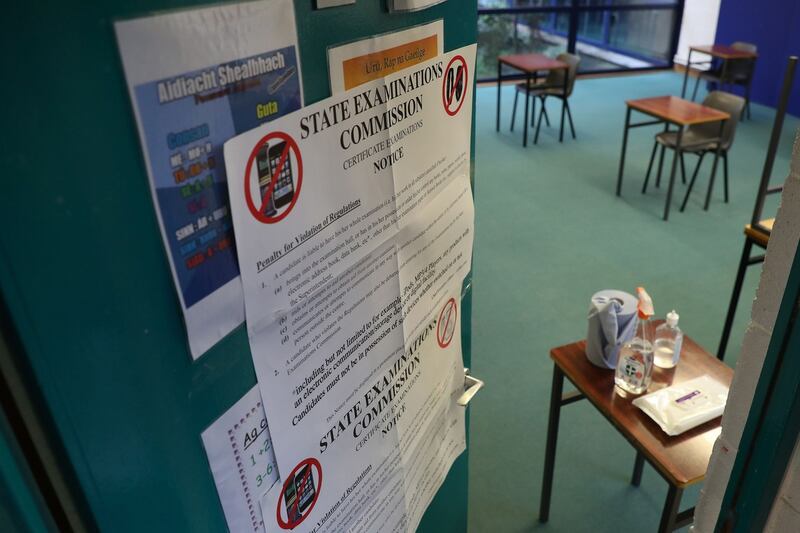This weekend will mark a momentous occasion in the history of Trinity College Dublin. For the first time in its 429-year history, Ireland's oldest university will elect a female leader. The appointment of a new, female provost reflects a welcome trend in higher education leadership, with four of the last seven presidential appointments in Irish colleges being women.
Appointing senior female leaders will not change culture on its own
The appointment of Prof Kerstin Mey as president of the University of Limerick last summer was welcomed but also served to highlight the complete absence of female university presidents up to that point. In some ways the glass ceiling had finally been broken, but it remained to be seen if this was a watershed moment. After waiting so long, 2021 may come to be seen as the year when everything changed, with the appointments of Prof Maggie Cusack as the president of the country's second technological university and Prof Eeva Leinonen as the next president of Maynooth University preceding the Trinity provostial election.

International evidence shows that women often do not put themselves forward for senior roles due to a lack of confidence in the environment to judge them fairly, rather than due to a lack of self-confidence. Being able to see senior female academics leading their university has the potential to change this narrative significantly. Yet appointing senior female leaders will not change culture on its own. These women need to be supported to bring about systemic change, and the Higher Education Authority (HEA) is committed to supporting them in this regard.
Lack of diversity in senior decision-making positions within higher education can only lead to a situation where many of our brightest and most talented students do not have role models at the highest levels. Developments such as the Senior Academic Leadership Initiative (SALI) and the appointment of female presidents are importantly increasing the visibility of female leaders in higher education. The SALI will create 45 new senior academic leadership posts in higher education institutions (HEIs) across Ireland by 2022, simultaneously increasing the number of women involved in decision-making processes and addressing issues of significant under-representation of women in certain disciplines. The response from HEIs has been overwhelmingly positive to the initiative and the pool of highly talented candidates who have applied for the 20 posts already funded has been impressive.
Latest figures published by the HEA show that women account for 26 per cent of professors in Irish universities. While this is an increase from the 19 per cent reported in 2016, there is still a long way to go to reach gender balance at senior levels. Currently, we see an annual increase of about 1 per cent in the proportion of senior female leaders, and the SALI is predicted to contribute an extra 4 per cent increase on top of that by 2023.
While the number of female staff in senior leadership positions grabs the headlines, advancing gender equality is about changing institutional and departmental cultures. The Athena Swan charter has helped drive policies in this area and achieving an award is now a requirement for colleges to remain eligible to receive public research funding. Since the HEA review of gender equality in higher education in 2016, much progress has been made nationally. HEIs must now ensure gender balance across all decision-making groups and all publicly funded HEIs must have gender-equality action plans in place.
From an equality perspective, we also know that harassment can seriously affect the careers of young female academics
Women face a number of barriers to progression because of numerous factors within HEIs, conscious and unconscious, cultural and structural, which are not experienced to the same degree by their male colleagues. In recent years, HEIs have taken important steps to address this, such as: reviewing their recruitment and promotion policies; ensuring that gender-neutral language is used in all material and resources relating to recruitment and promotion; delivering equality and diversity training for all staff members acting as interview panellists or conducting performance reviews; ensuring a minimum of 40 per cent of each gender on interview and selection panels; and advertising their equality and flexible working policies.
Harassment
However, gaps still remain. For instance, from an equality perspective, we also know that harassment can seriously affect the careers of young female academics. More work needs to be done to tackle this issue and the HEA, at the request of Minister for Further and Higher Education Simon Harris, has recently established an expert advisory group focused on ending sexual violence and harassment in higher education.

Gender inequality has never been more apparent than in the last year, when we have seen female staff disproportionately affected by the Covid-19 pandemic. For instance, the research time lost due to the necessity to move to an online mode of teaching delivery, combined with the increased burden of caring responsibilities (which disproportionately fall on female staff), has the potential to further delay career progression for female academic staff. Internationally, evidence has emerged that, since the start of the Covid-19 restrictions, women researchers are submitting fewer academic papers than men.
In 2016, the HEA expert group outlined the following vision for Irish higher education: “By investing in gender equality, Irish higher education institutions will maximise their pursuit of excellence and successfully meet the many social, economic and cultural challenges of the future.” This statement takes on renewed significance in the context of the current crisis and it is crucial that gender-equality initiatives are continued and that any national or institutional strategies or policies in response to Covid-19 are gender-proofed. In this context, the HEA will carry out a second national review of gender equality in higher education later this year.













